Pico #2: Island Wine Tour
A) Intro to Pico
Pico Island, one of seven islands of the Azores, a Portuguese archipelago in the middle of the Atlantic Ocean, is known as one of the most unique places in the "world of wine."
The exact date of the origin of the Azores is unknown. One archaeologist speculated that these volcanic islands emerged around the start of the Common Era (year zero). It seems that during the 1300’s, Europeans were aware of the existence of the Azores. Between 1427 and 1439, the Portuguese discovered and began settling the islands.
It is funny that Pico became famous for its wine because initially the Portuguese referred to the island as monstrous, uncultivated, and hideous due to its black, volcanic-rocky terrain. Pico was the “cursed island.” But, these geological features were what eventually led to Pico’s wine culture becoming so unique.
B) The History
The Godfather
The first person to bring wine to Pico was a Franciscan friar by the name of Frei Gigante in 1450. His intent was to cultivate wine for the Catholic Mass. The Catholic religion is massively important in Portuguese history and culture. Around 80% of Portugal’s population celebrates Catholicism. Wine is used in Catholic religious celebrations as a representation of the blood of Jesus Christ.
Verdelho
The type of wine that Frei Gigante made is important, too. With him, he brought Verdelho rootstocks. Verdelho is a white grape that is known for producing high-quality wines with nice acidity and minerality. To this day, Verdelho is the main grape variety grown in Pico vineyards.
In the picture below, you can see a vine with Verdelho grapes and Pico's unique soil, which I will write about next.
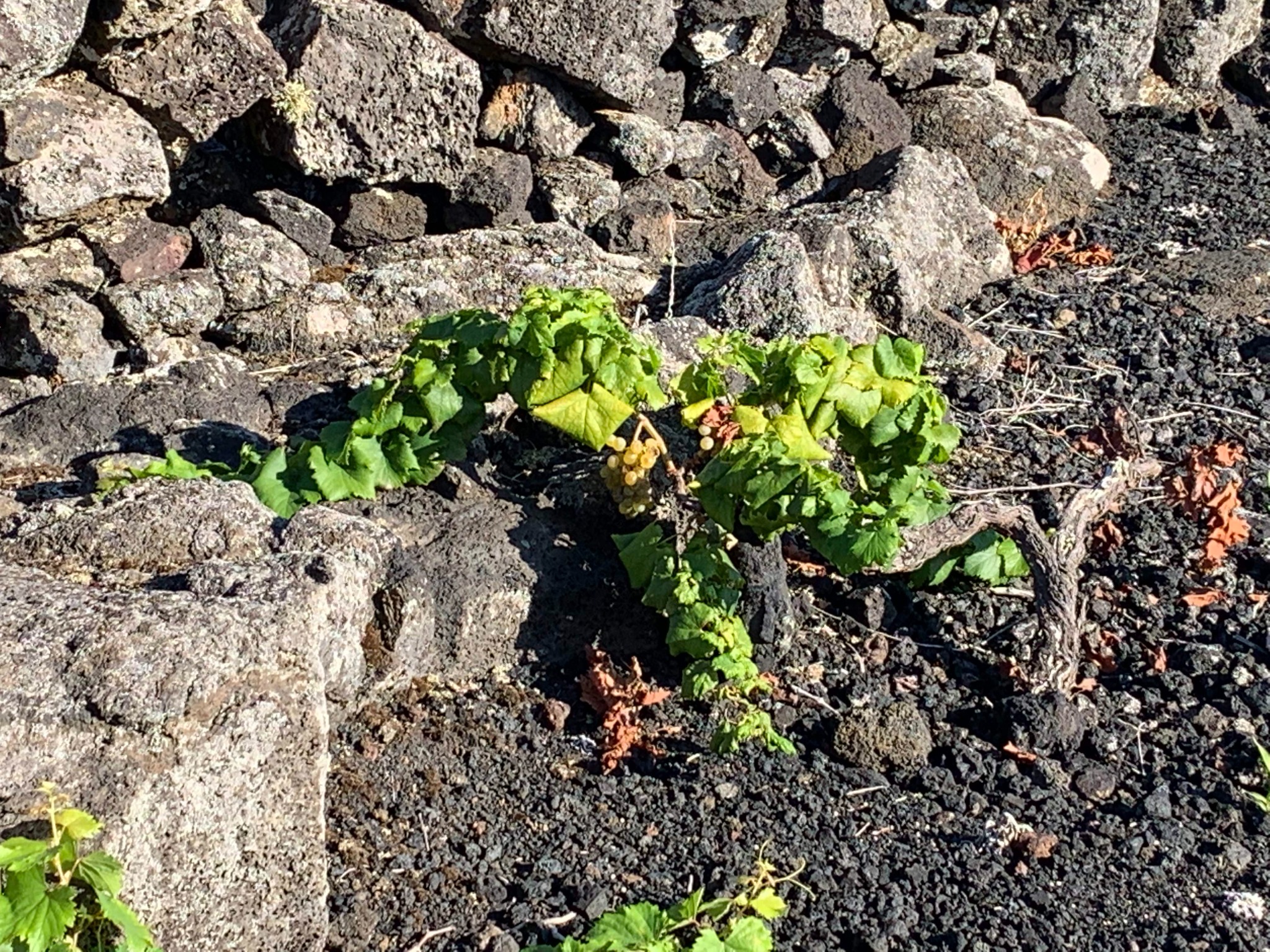
Volcanic Soil + Mild Temperatures
Eventually, more and more Portuguese settlers of Pico and nearby island Faial realized that despite the island’s initially unsettling appearance, these conditions made Pico a very suitable place for wine making:
- Lajido Soil: The volcanic soil on Pico Island is known as “lajido.” Its main component is black basaltic rock. The soil reflects sunlight and retains heat, which promotes ripening of the grapevines and extends the growing season into periods of the year with cooler weather.
- Mild temperatures: Mild temperatures are ideal for vineyards. Cold temperatures and frost can prevent growth. Warm, humid climates can also create favorable conditions for fungal diseases.
Faial Soil
Pico’s earliest vineyards still experienced some vulnerabilities. While the lajido soil absorbed heat, it didn’t store moisture as well. At this time in the 1500’s, much of the Pico’s land was actually owned by wealthy Azoreans living on Faial. (Remember Pico’s reputation as an undesirable place? Those who could afford it would choose to live on Faial. These were also the people with social and political connections, so when Pico’s potential for winemaking was realized, they were able to navigate the legal frameworks and regulations that permitted them to buy land on Pico rather than Picarotos, the natives of Pico.) So, these landowners began sending on sailboats soil from Faial to Pico that would be used to help start some of the island’s first vineyards.
Curraletas
Another challenge was that because much of Pico’s interior terrain descends from the small island’s central mountain, or dormant volcano, most of the flat land is near the sea, which is exposed to winds that are not ideal for vine growing due to both the obvious disruptions and the salt from the sea that the wind brought with it.
To solve these problems, Pico winegrowers built curraletas, which are a series of black basalt stone walls that help create small, square-shaped plots of land with the ideal conditions for the grapevines’ success. First, these walls protect the grape vines from the wind. (The vignerons, or vineyard farmers, plant the vines at an angle so that they grow along the ground rather than upright.) The curraletas also help to create microclimates with small plots of the land that are more likely to absorb the rainwater. Sometimes, the vignerons even use individual lava rocks to support vine branches, which also increases the warmth sent from the rocks to the vines to help their grapes ripen.
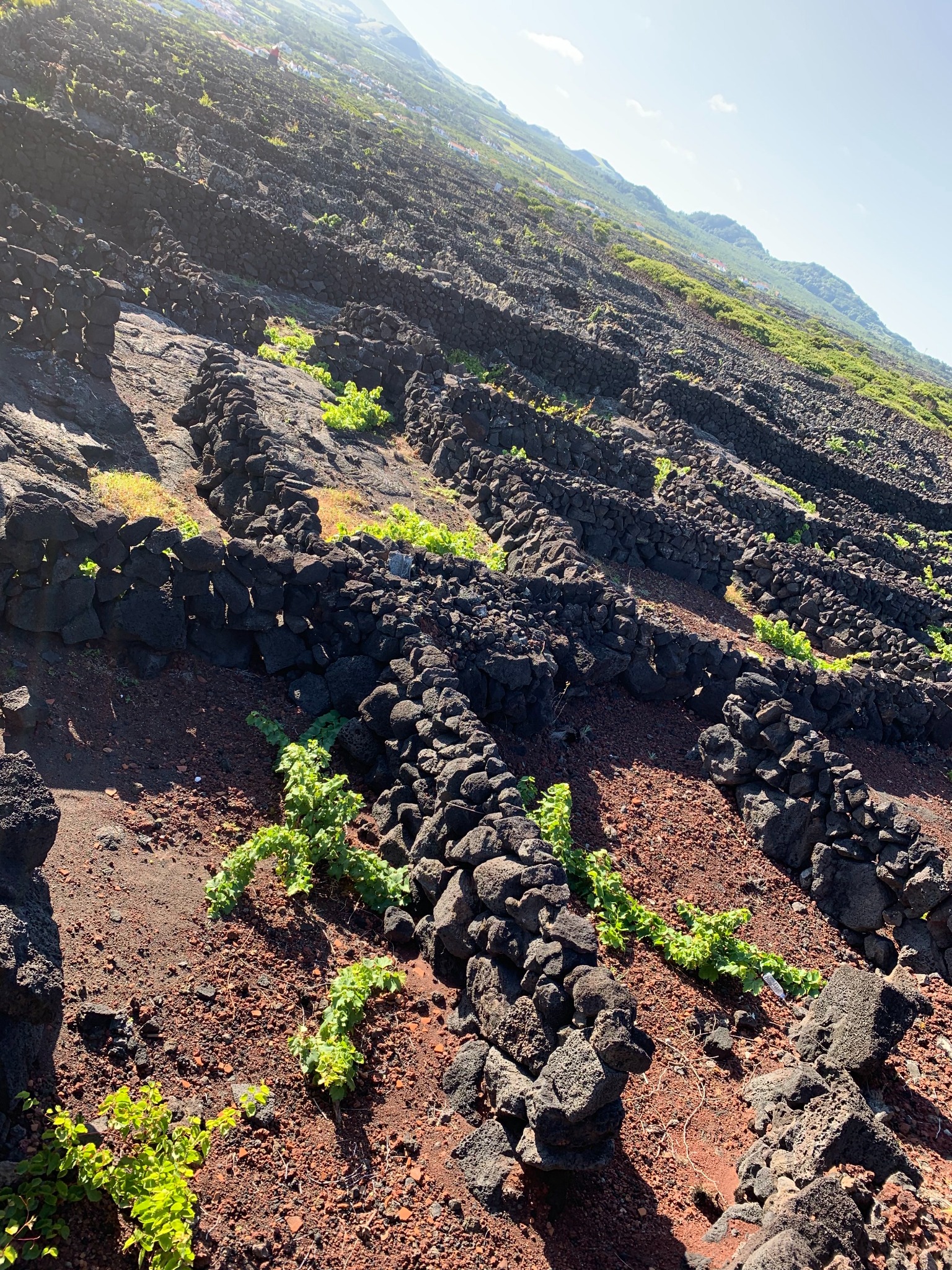
Pico Wine Today
Pico wines today are known to be crisp and acidic with mineral qualities and tropical, citrusy flavors. In 2004, Pico Island’s wine landscape was classified as a UNESCO World Heritage Site.
C) Criação Velha
Criacao Velha is a parish in the municipality of Madalena, the largest town and capital of Pico Island. Criacao Velha is perhaps the best place to see Pico's vineyards. There is a large vineyard here that you can find labeled on Google Maps as Paisagem da Cultura da Vinha da Ilha do Pico (Cultural Landscape of the Vineyard of the Island of Pico). Within it, there are trails, informational displays, and an observation tower.
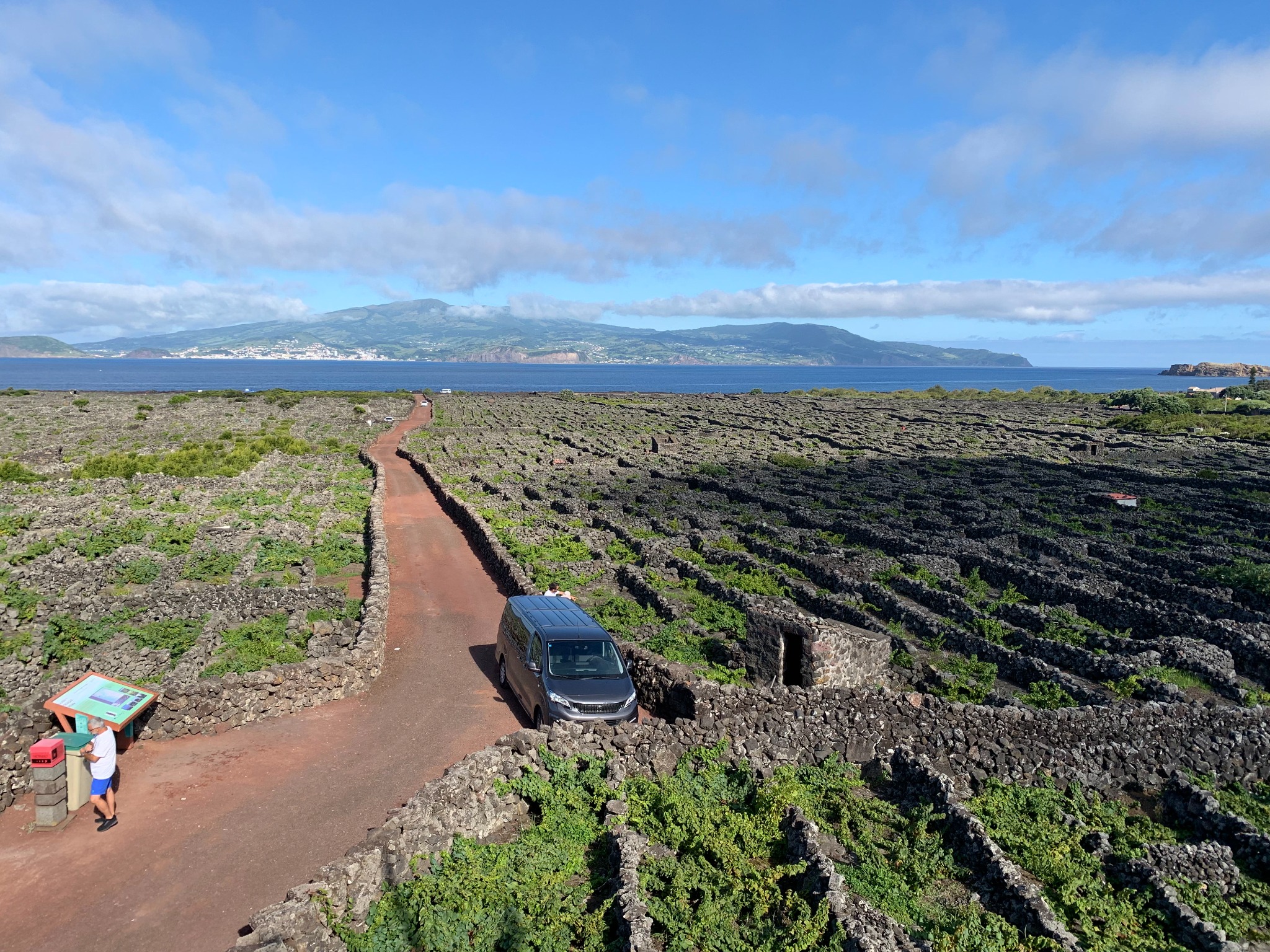
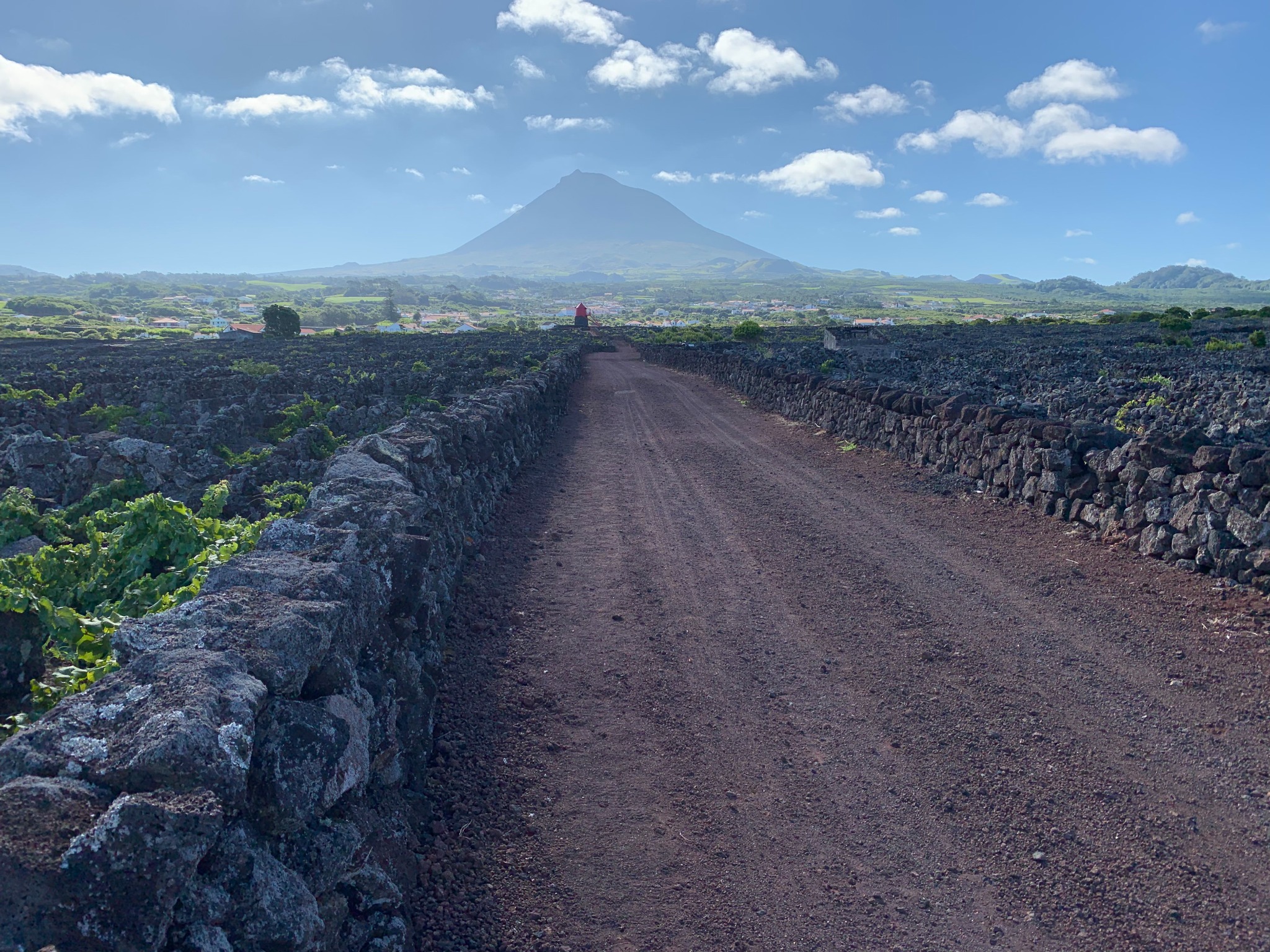
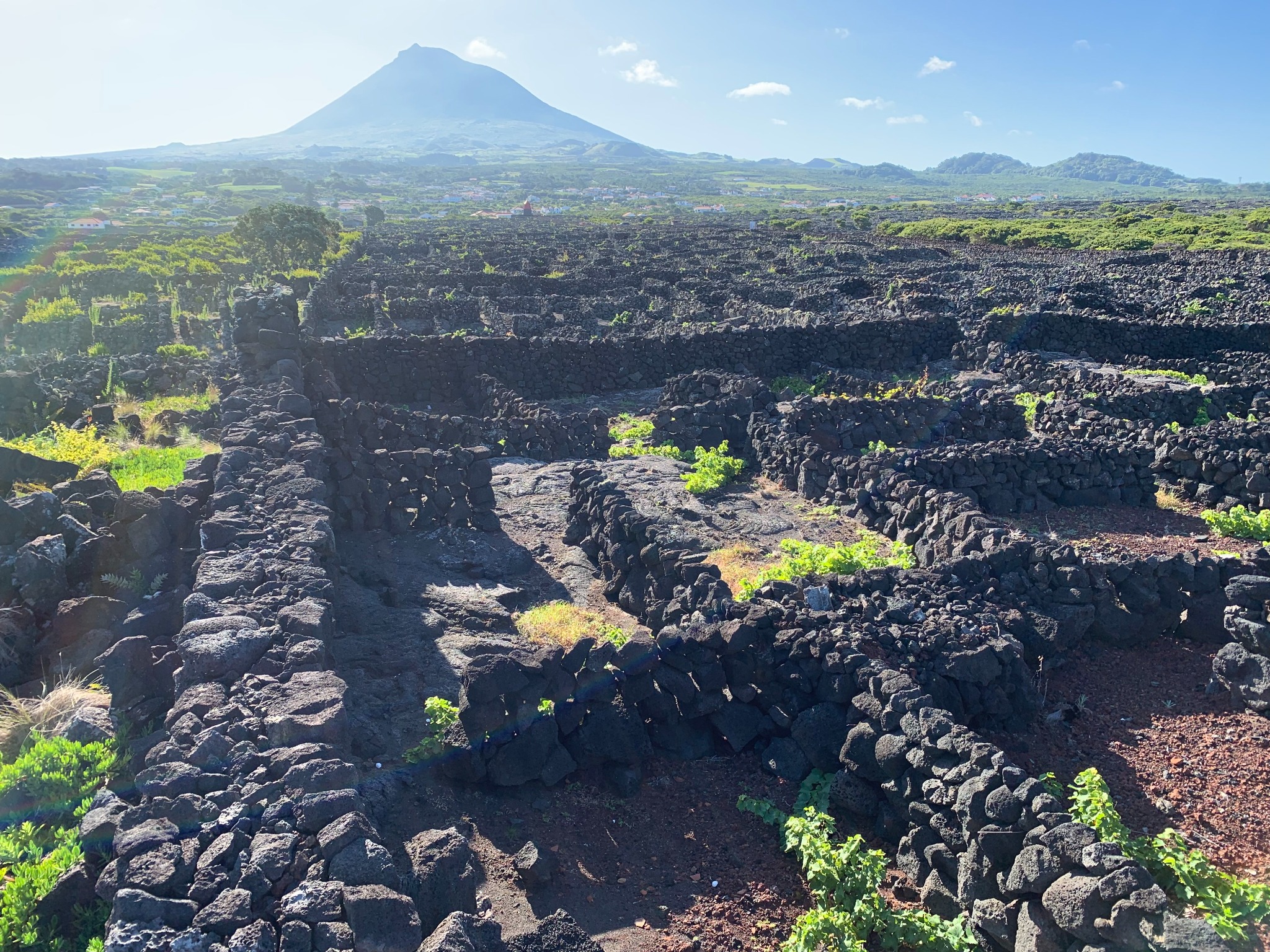
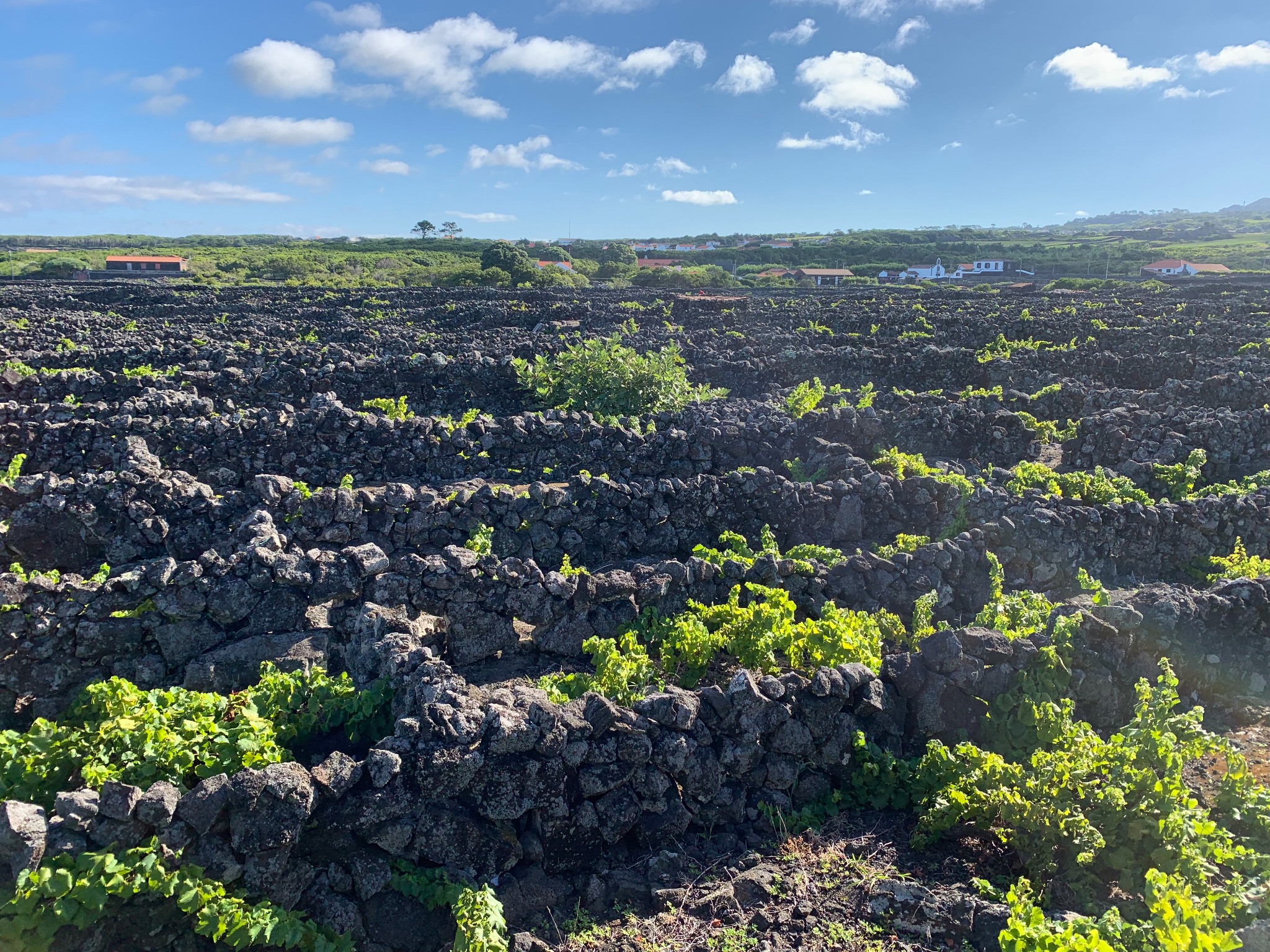
D) The Northwest Coast
Along the northwestern coast of the island north of Madalena, there is a string of little towns where you can give yourself a wine-themed tour with some other cool, non-wine related add-ons.
The map below shows you the journey between Cachorro and San Antonio. You can walk or drive from town-to-town. The red line shows roads. The yellow line shows a hiking trail (no cars) along the Bay of Santana between Arcos and Santana. The entire duration of the "tour" depends on how much time you spend in each town along the way. If you drive, your total drive time will be around 15-minutes in the car. If you walk, your total travel time will be around 2.5 hours.
Personally, I would walk and make this an all-day affair because there is so much to see and do along the way. We were traveling as a family and at one point lost a bit of steam, so maybe if you are in a bigger group with varying levels of interest and endurance, renting a car and going that way is better.
You can travel from west to east (Cachorro to San Antonio) or east to west (San Antonio to Cachorro). We started in Cachorro, so I will write about it that way.
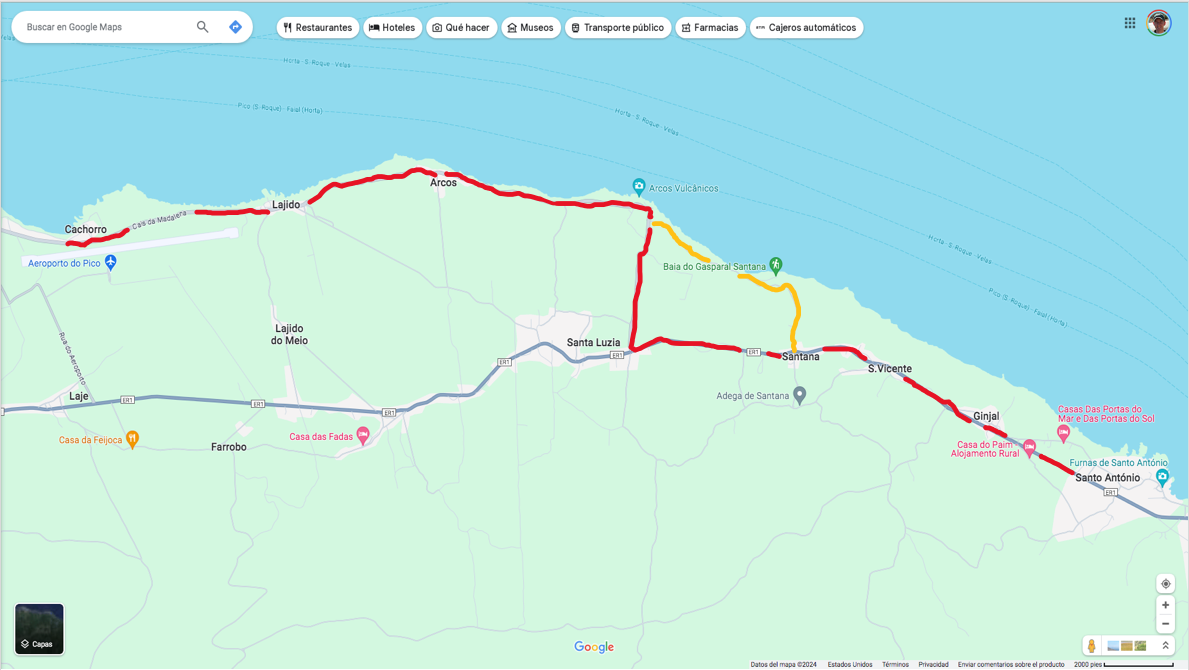
Cachorro
The first town on the tour is Cachorro, which means “dog” in Portuguese. There is a stone rock formation that looks like a dog’s head, for which the town is named. Here are four sites to see in Cachorro:
- Coast Places: As you walk through the town, you can see the low-hanging black and white basalt buildings that line the sea. These are called “coast places.” In these buildings is where local vintners would craft and store their wine. You can even view the stone ramps atop which barrels would be rolled for shipment.
- Zona Balnear do Cachorro (bathing area of Cachorro): Right next to the coastline, there is a network of walkways and steps that you can walk to access different viewpoints and swimming areas.
- The volcanic rock accumulated along the coastline
- O cachorro: Of course, go see if you can find the dog!
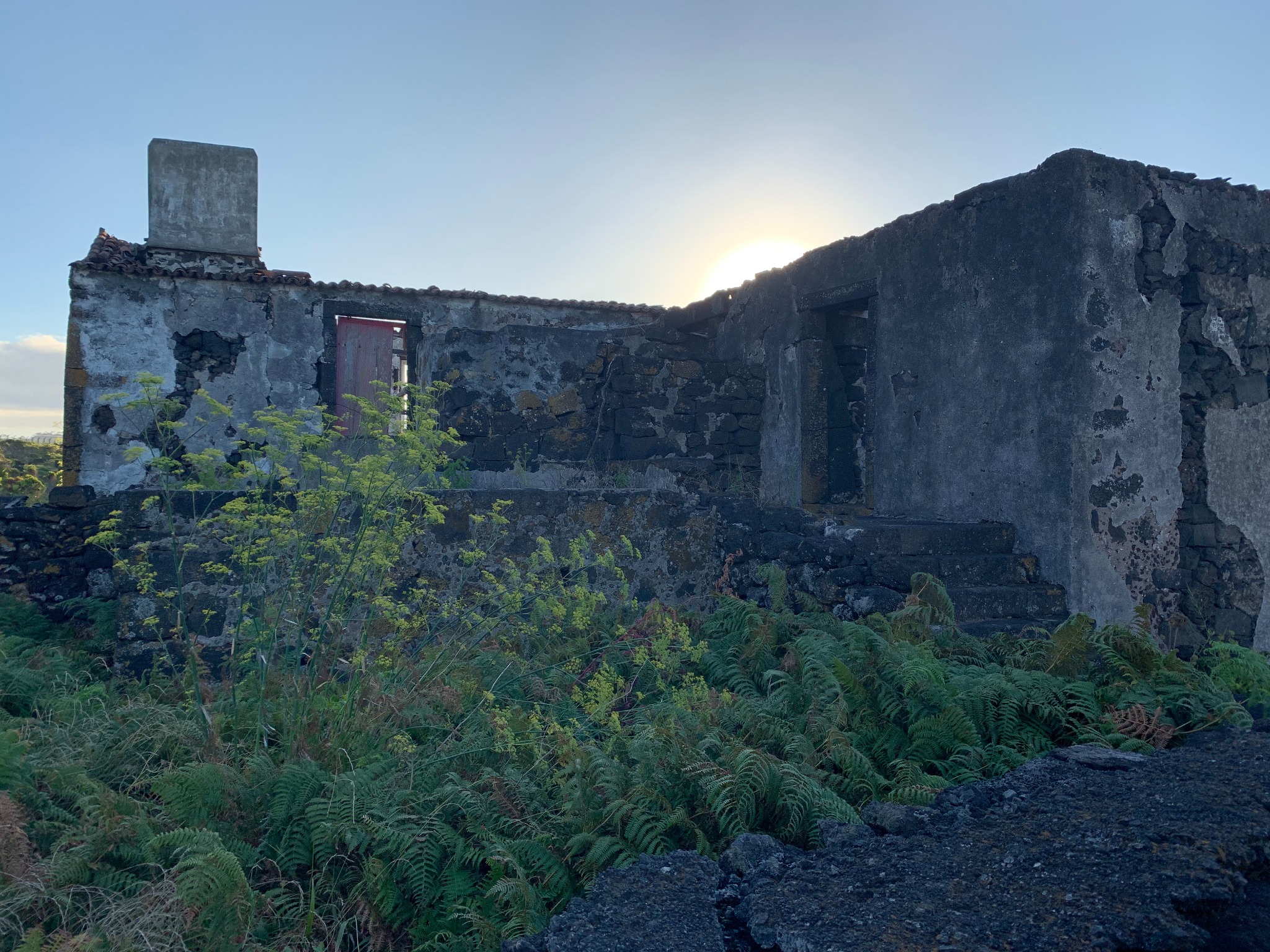
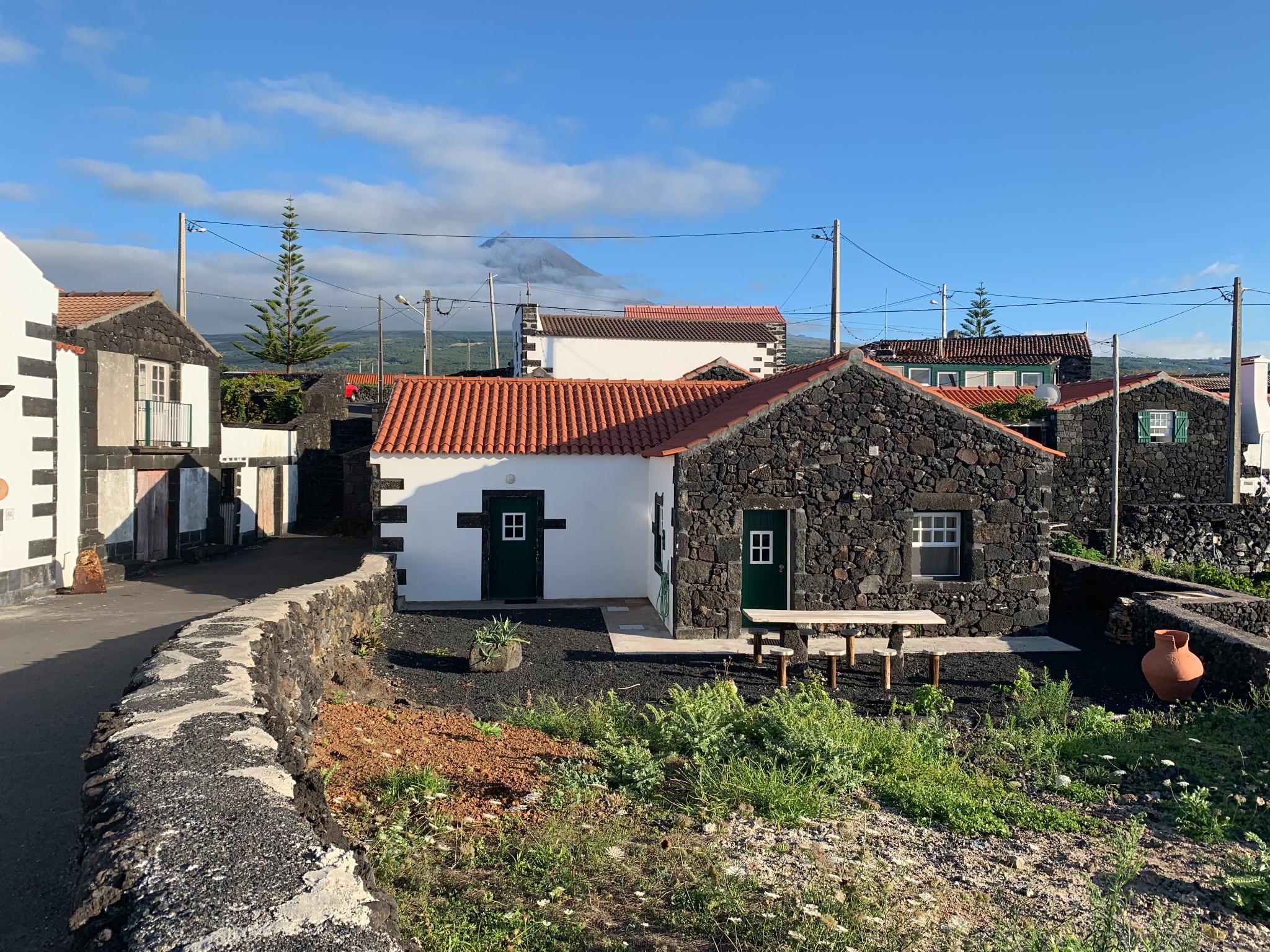
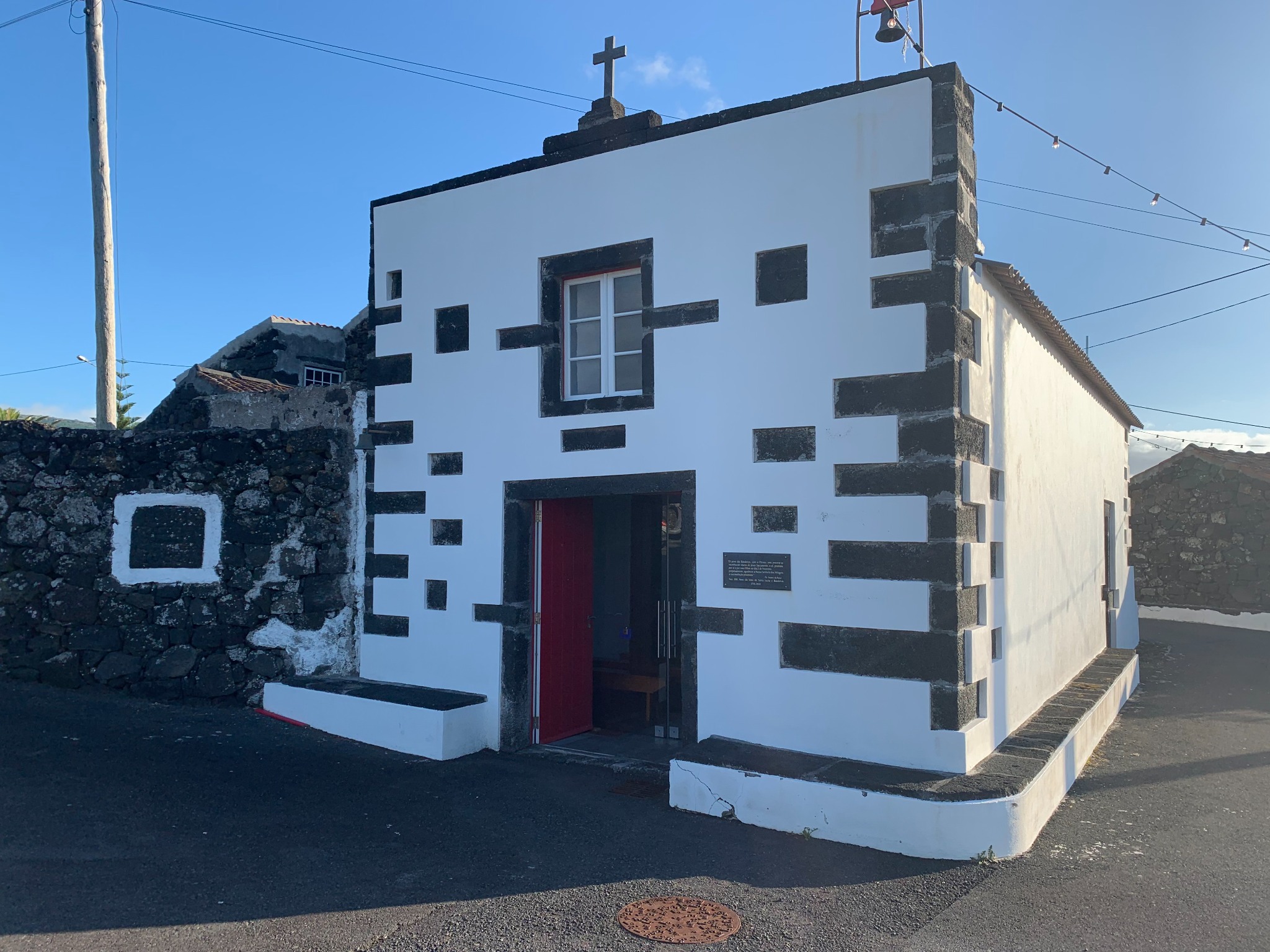

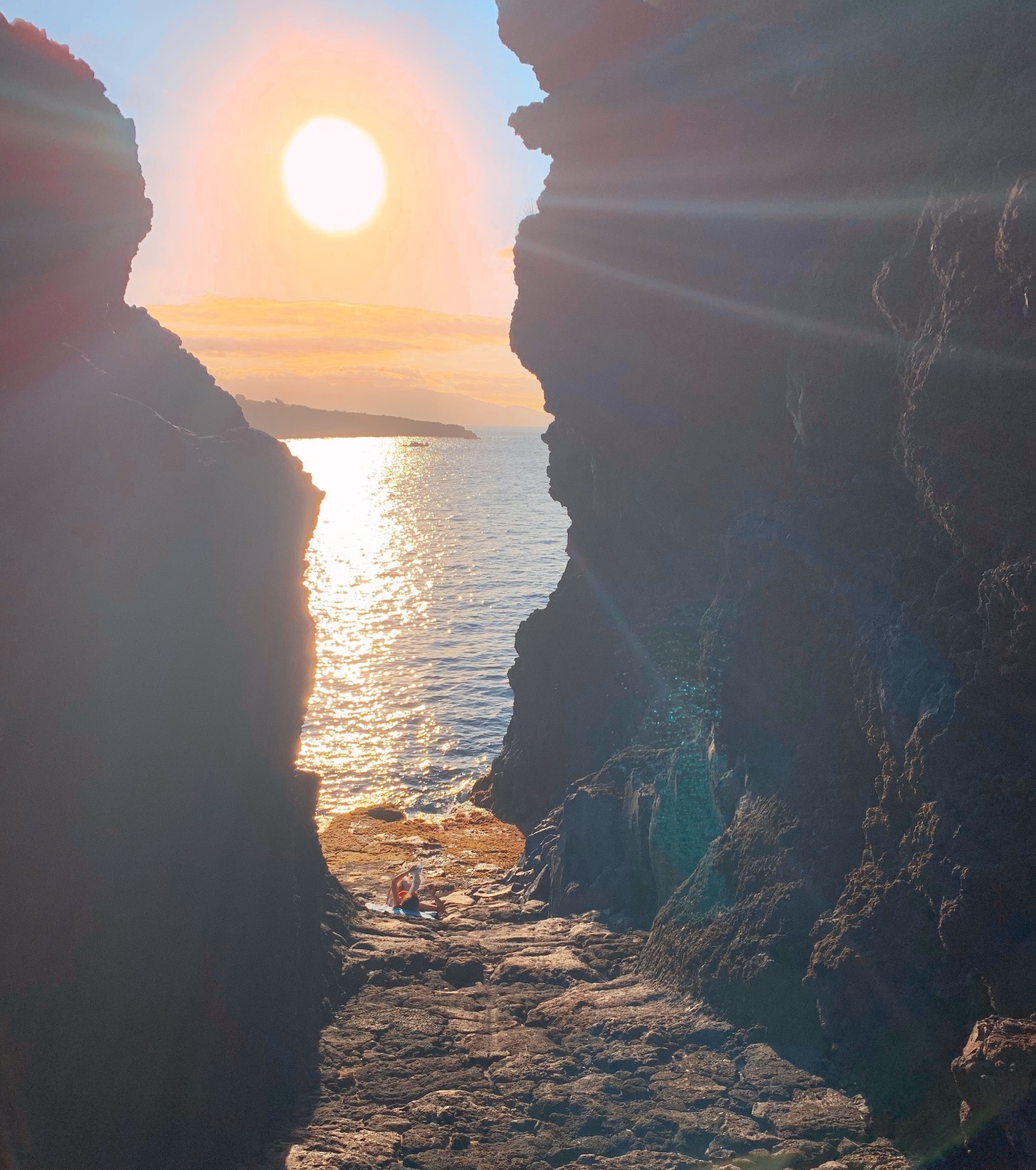
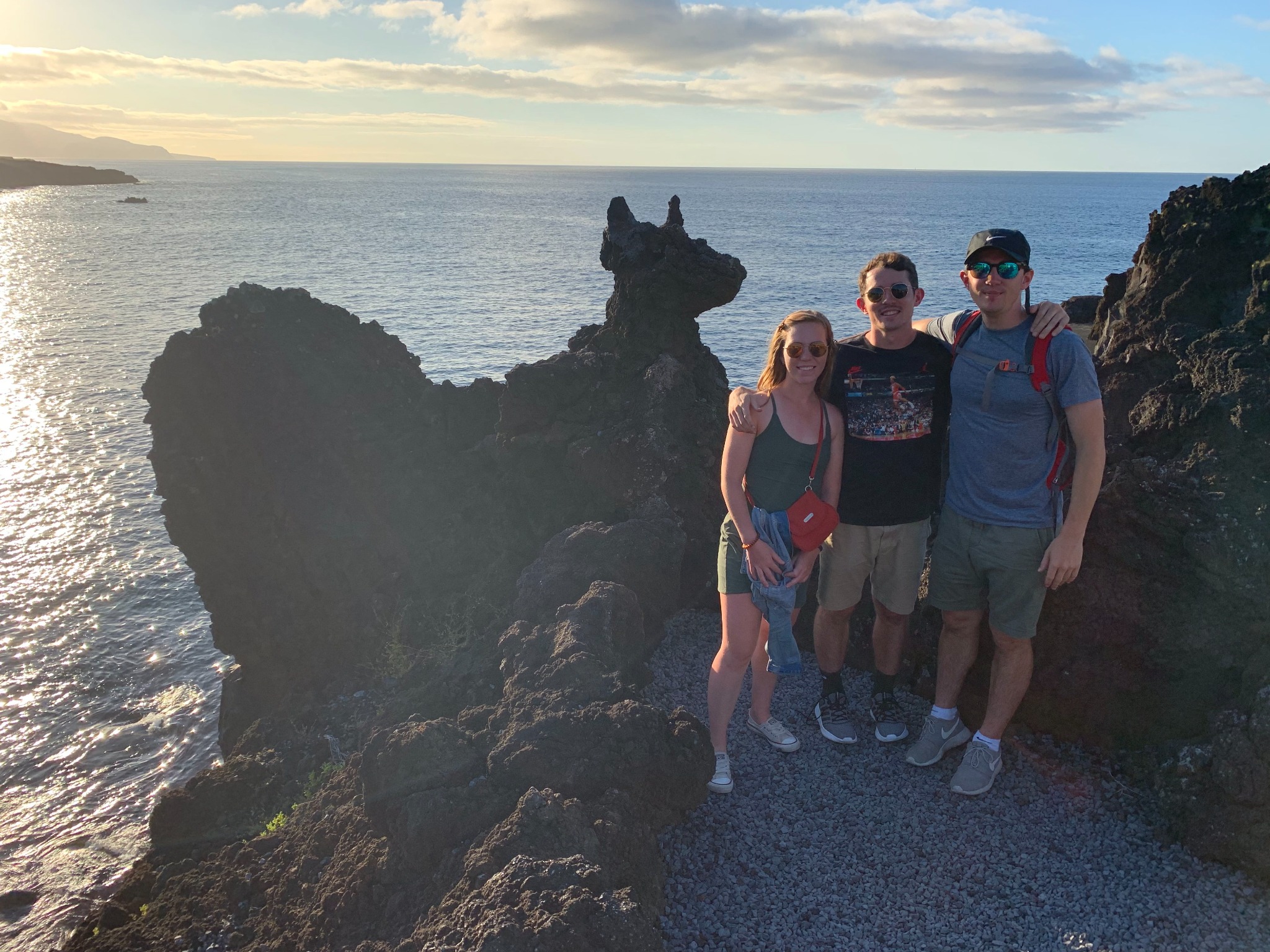
Lajido
It seems as if this town is named after Pico’s volcanic soil. Here are three things for your checklist in Lajido:
- The town’s traditional black and white houses
- Mule cart tracks: Near the coast, you can see tracks from the old mule carts that would transport wine barrels deeply imprinted in some of the hardened lava, a process that must have taken centuries.
- Centro de Interpretação da Paisagem da Cultura da Vinha da Ilha do Pico (Pico Island Vineyard Culture Landscape Interpretation Center): This is a really nice, little museum devoted to Pico’s wine culture, where you can read informational displays, speak with an employee/expert, and sample different Pico wines.
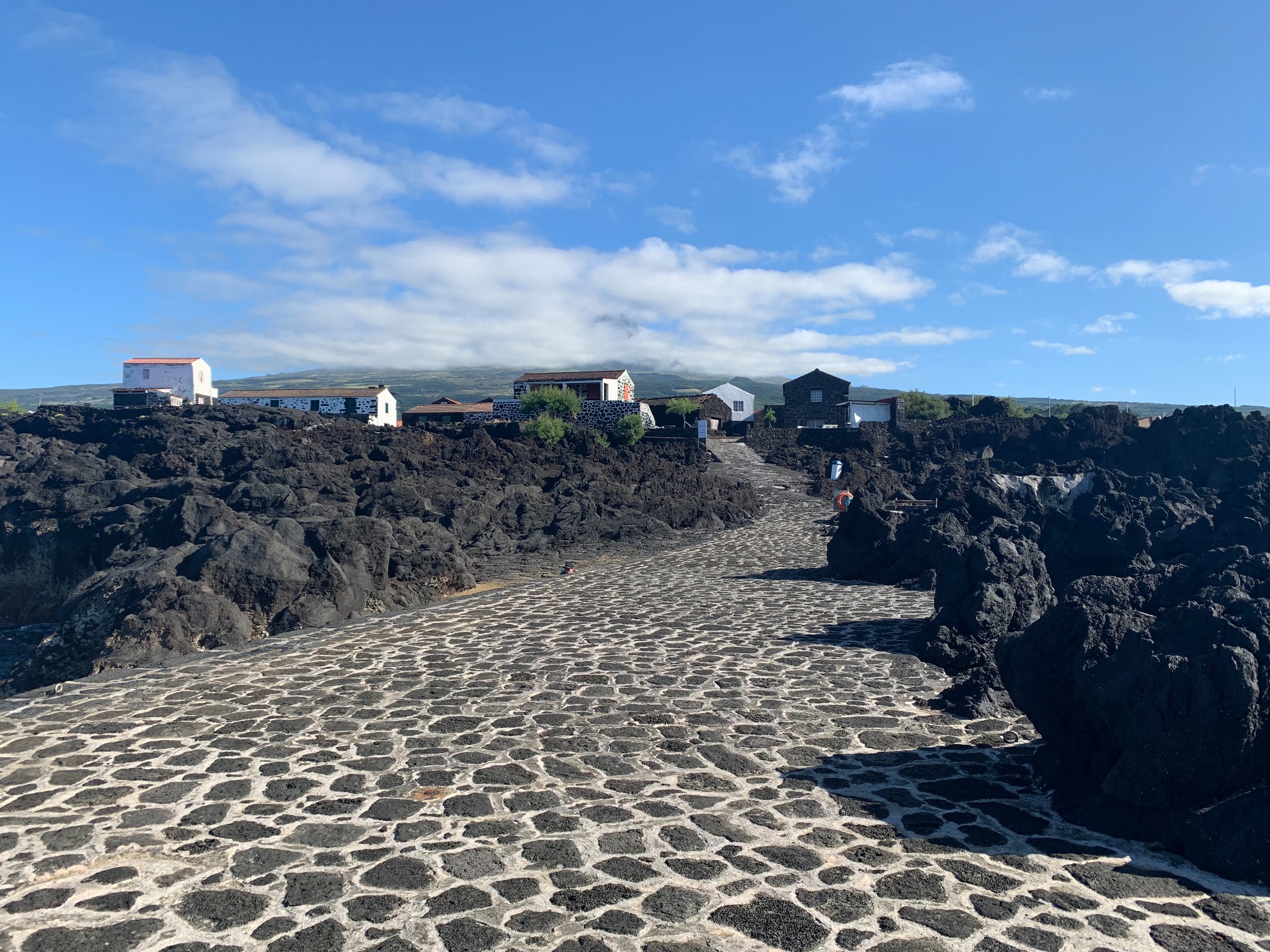
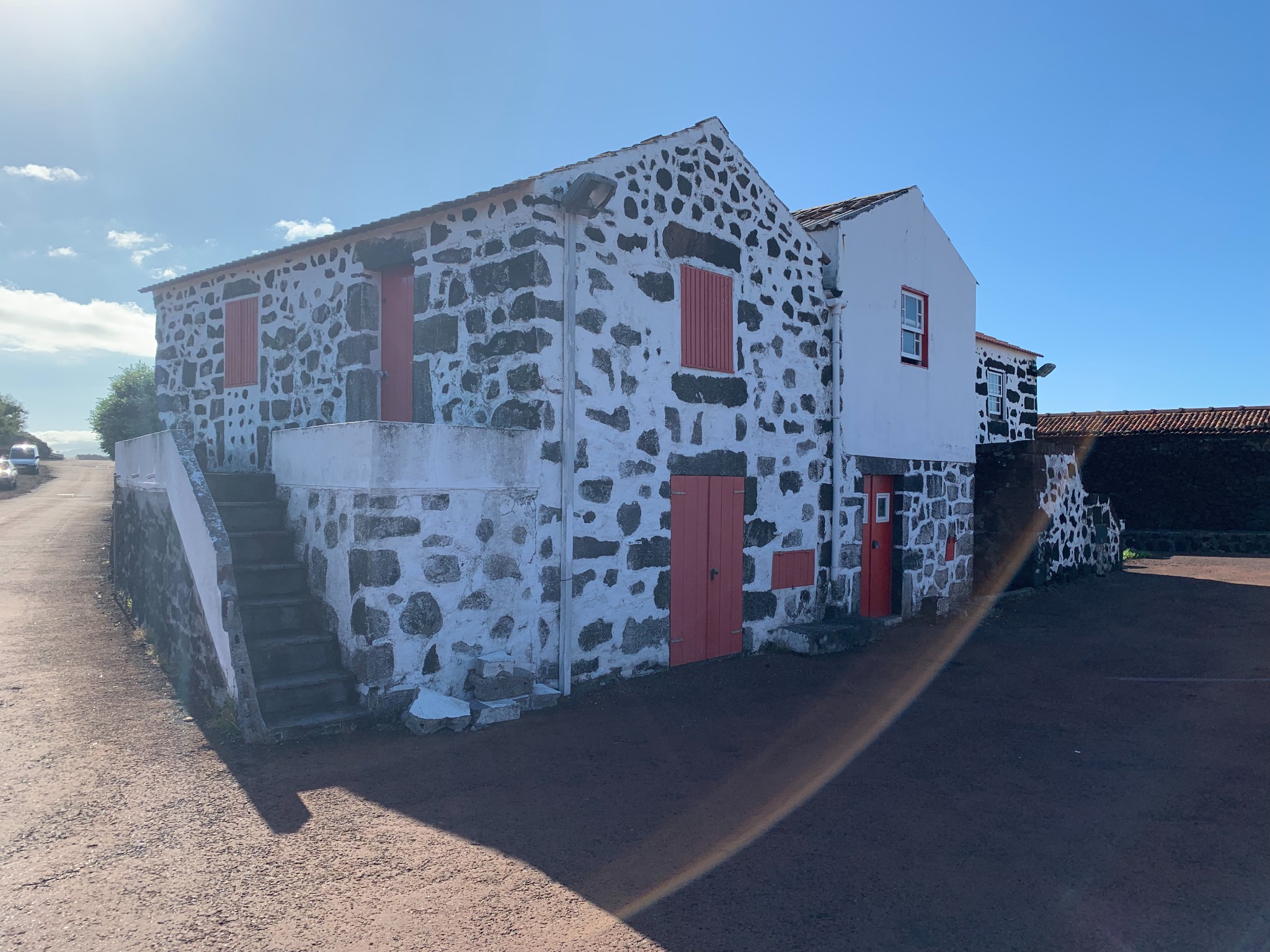

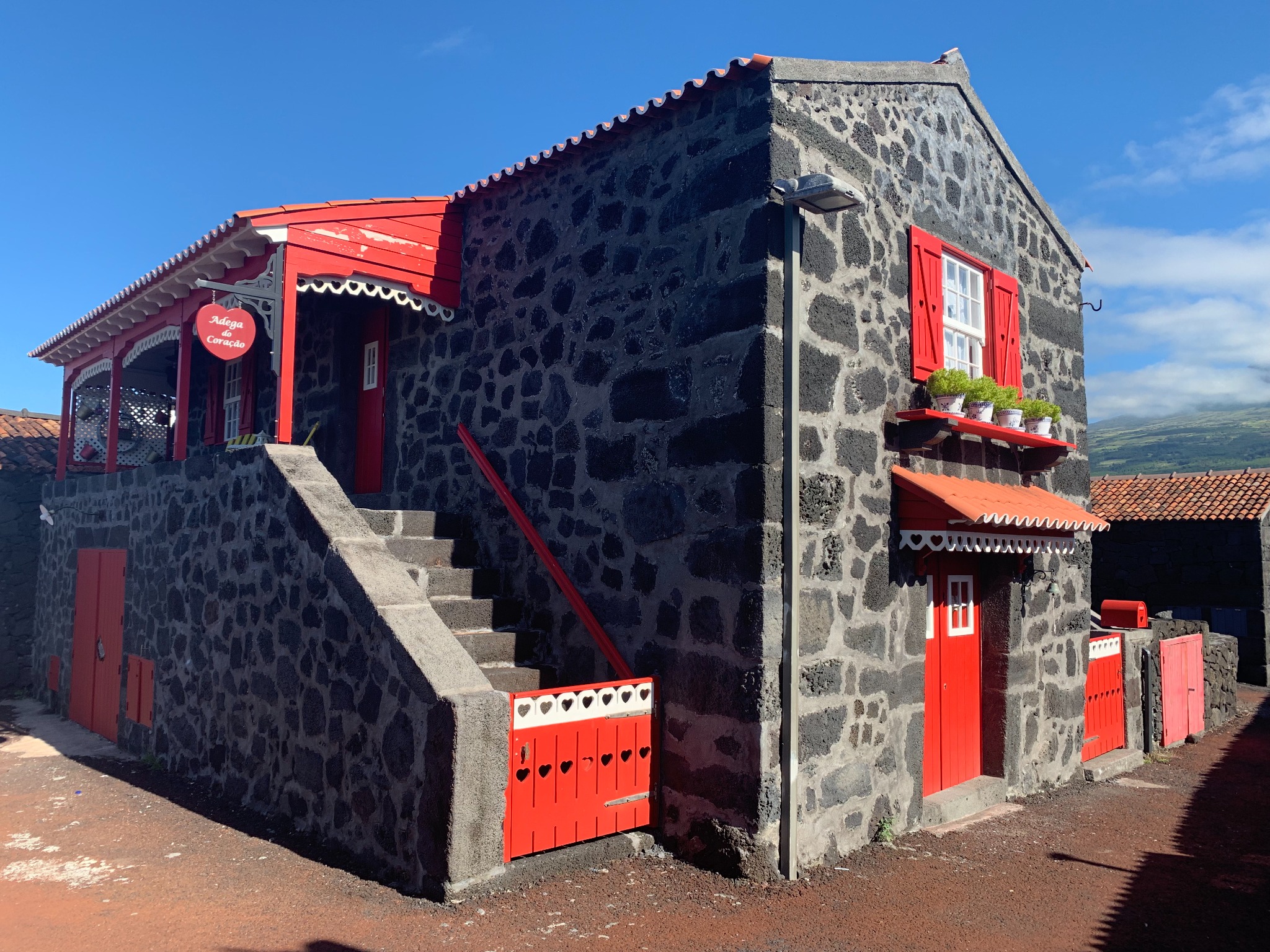
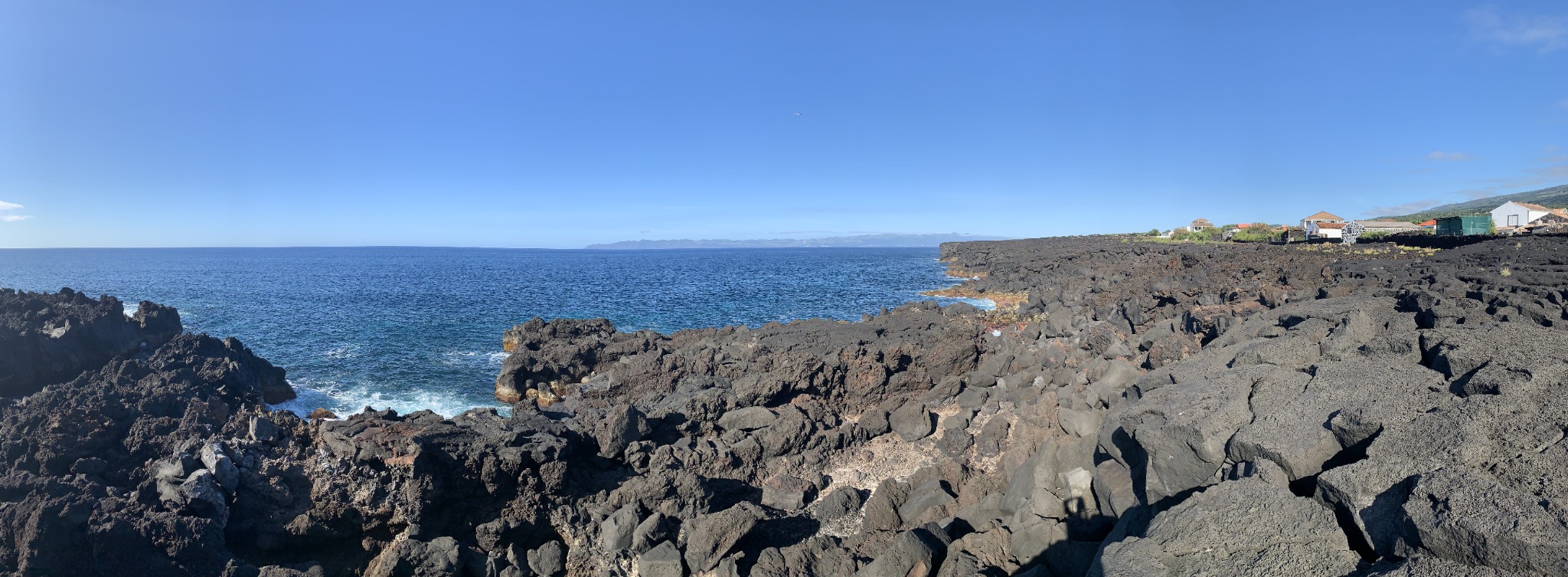
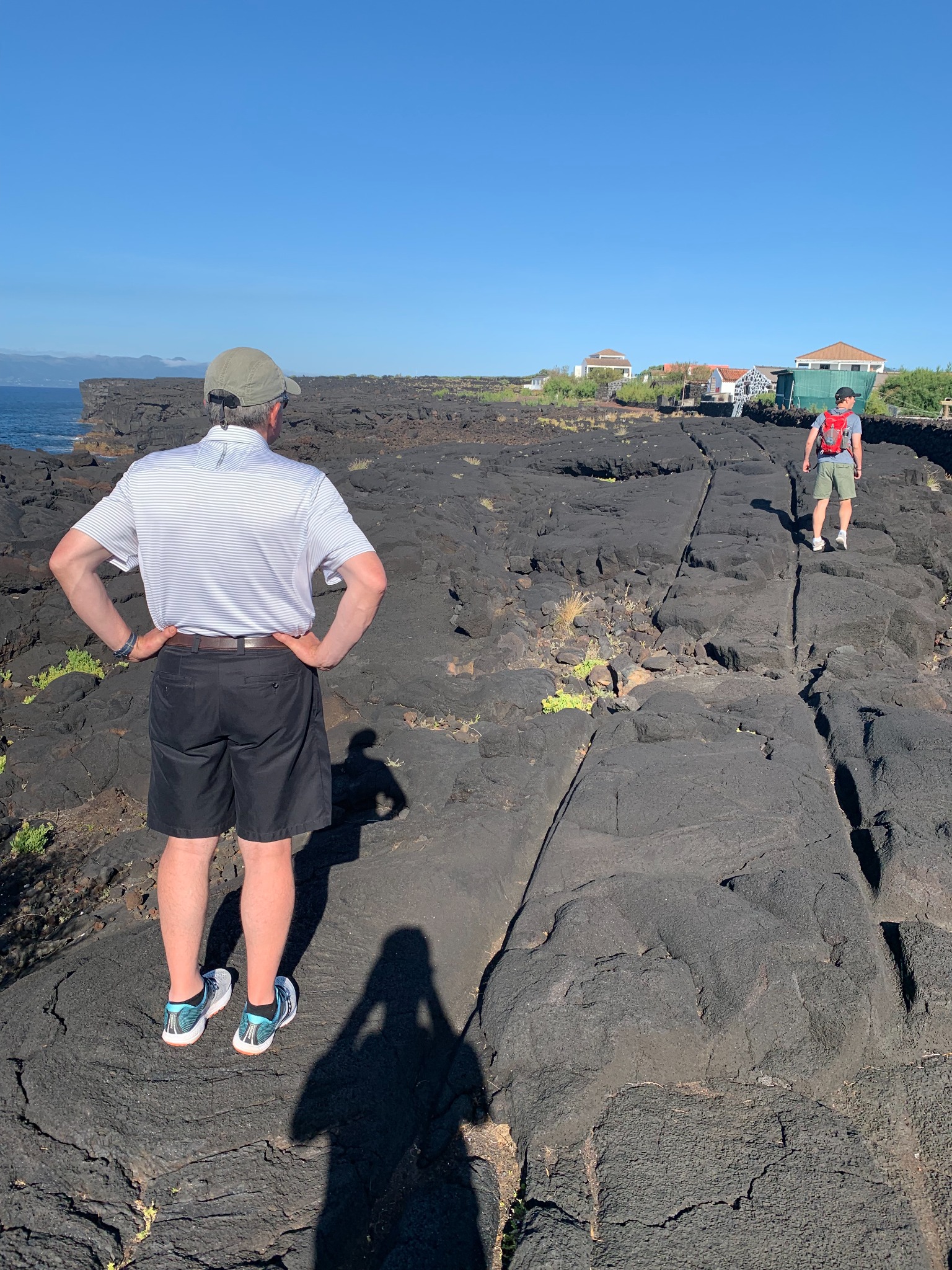
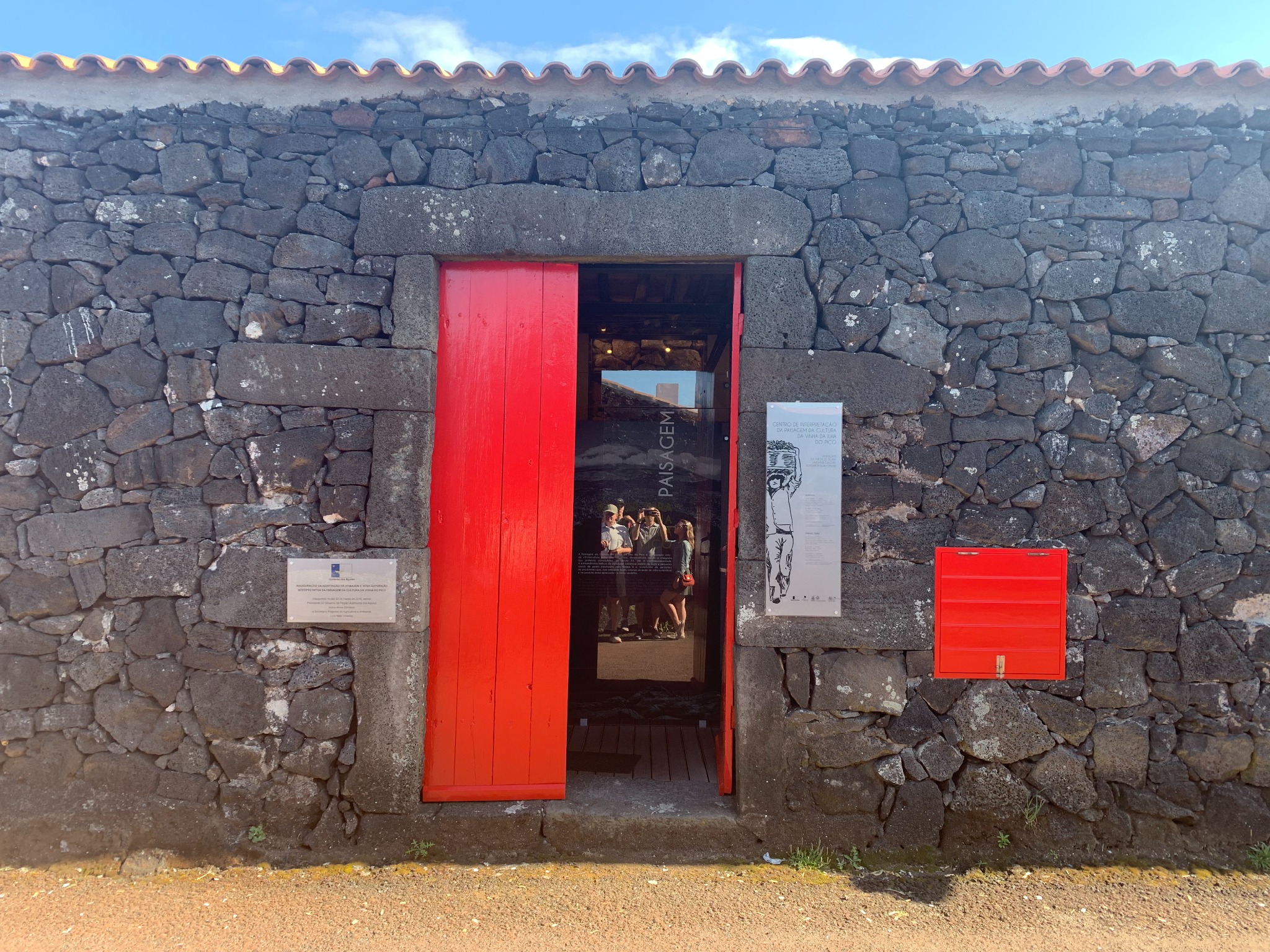
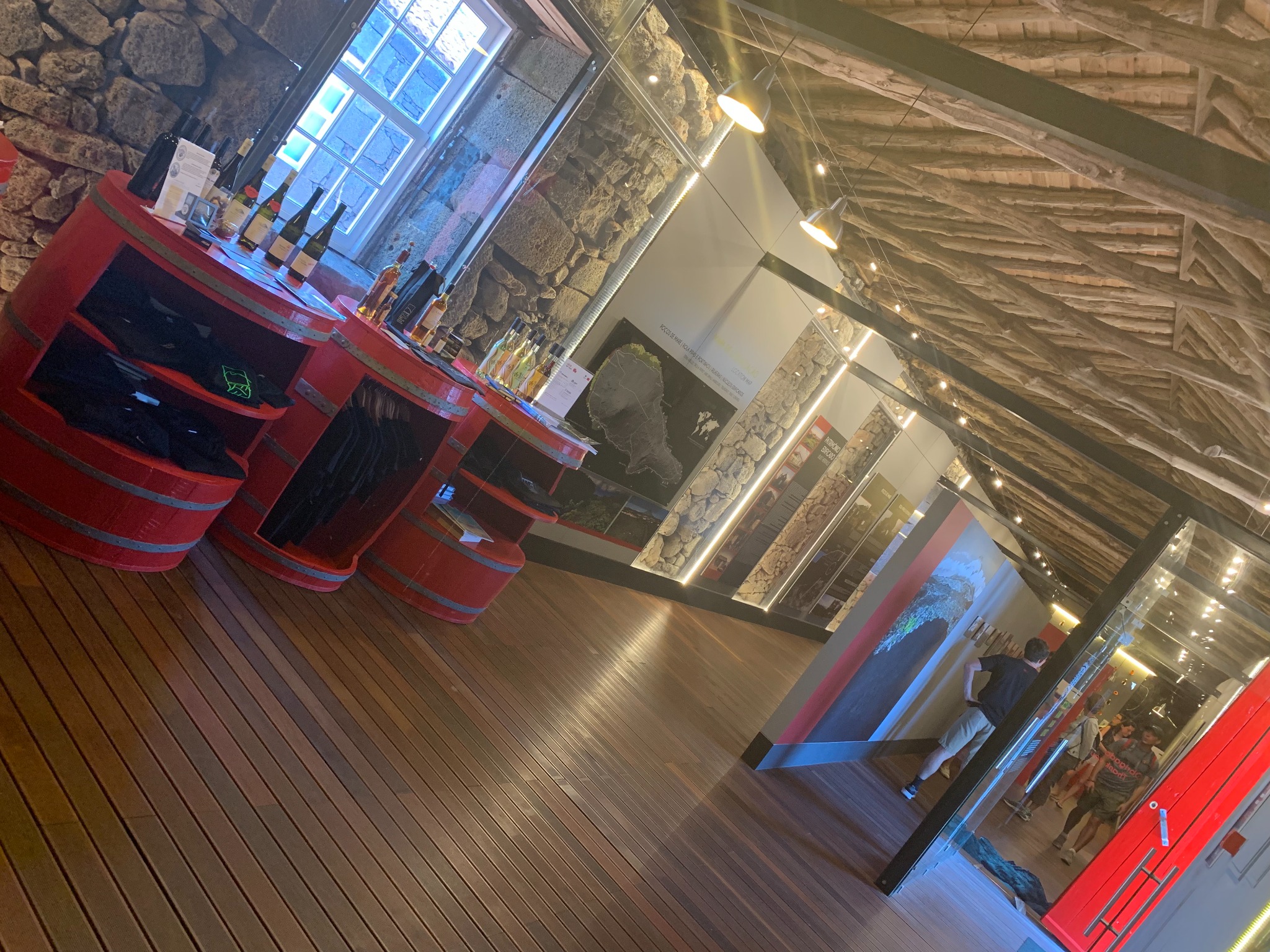
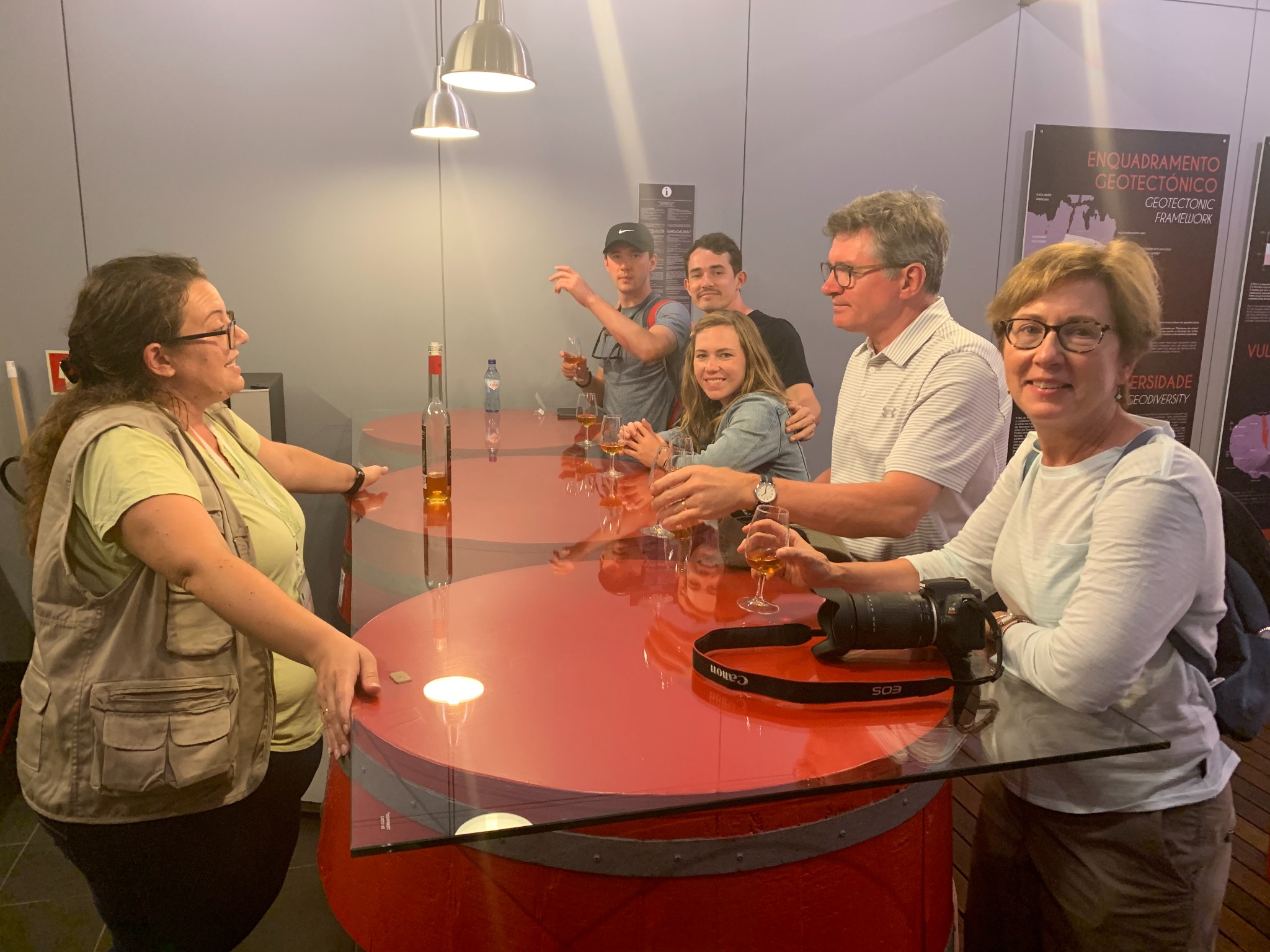
Arcos
This stop is not wine-related, but Arcos has a really nice water access point called Zona Balnear dos Arcos (bathing area of Arcos) with walkways and steps that lead to the water and an enclosed swimming pool that fills with ocean water.
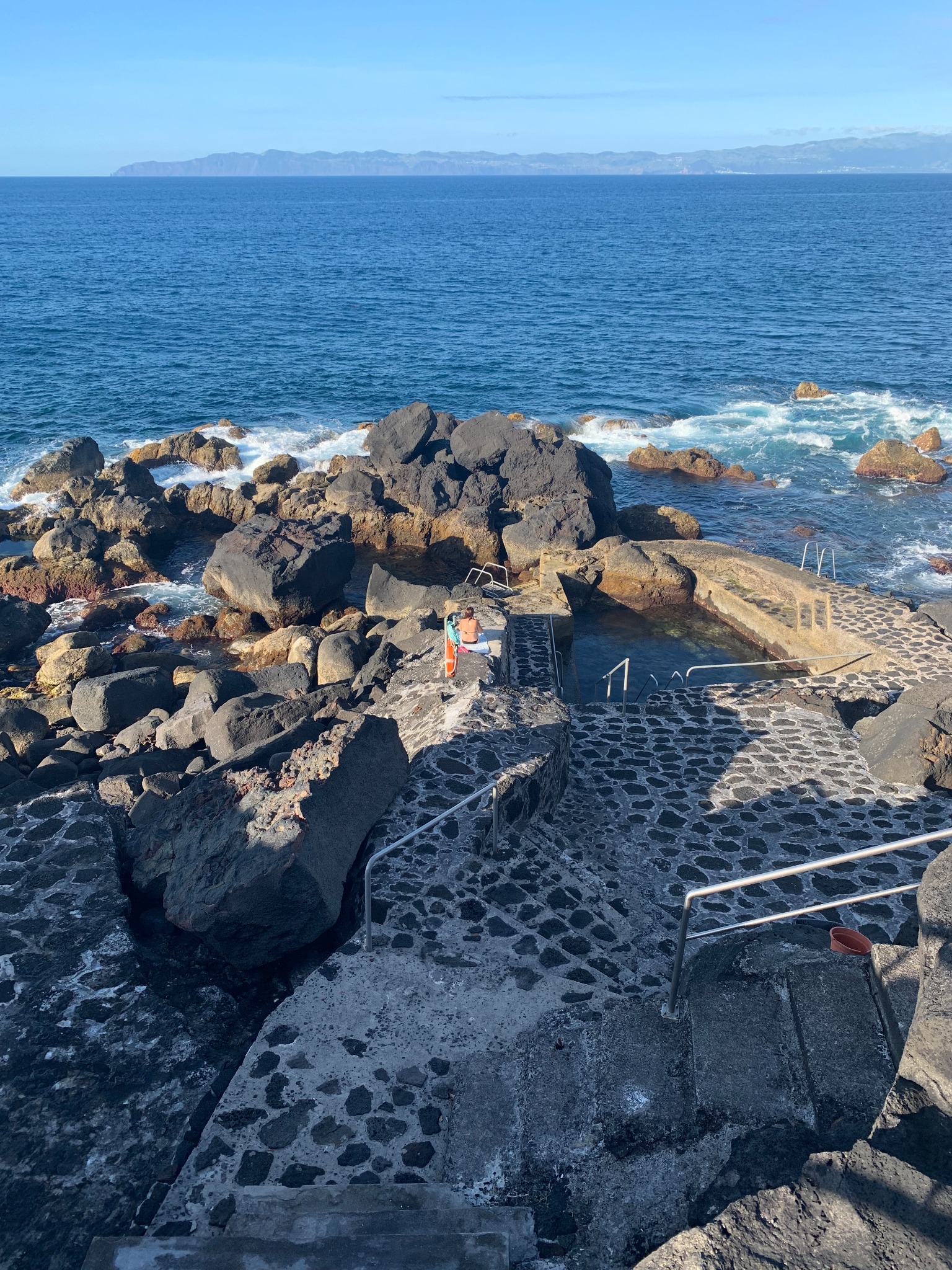
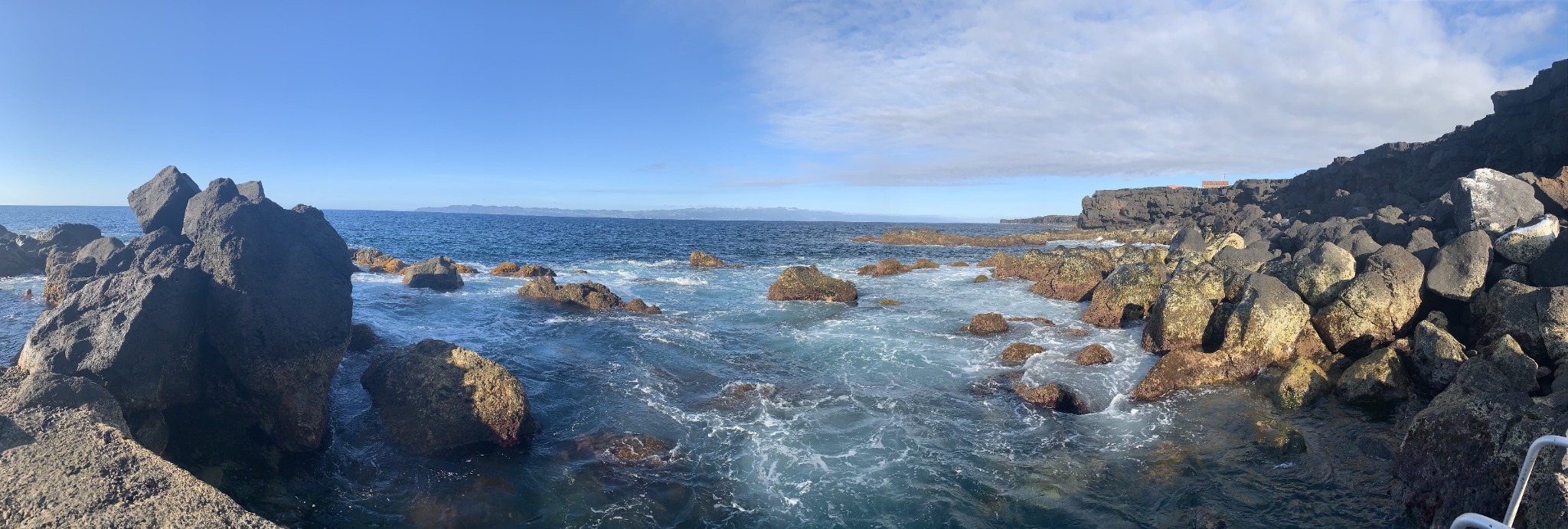
Hiking from Arcos to Santana
Remember the yellow line on the map above? That showed the hiking trail that takes you to Santana. First, you would have to walk along a road about two miles from Arcos to the trailhead. Then, the trail runs another two miles to Santana.
The trail runs along the coast and offers beautiful vantage points of Pico's Gasparal Bay, from where wine barrels were loaded onto boats for shipping. You will also walk through basalt vineyards and past old wine houses, seeing remnants of the past through stone cellar ruins, stone barrel rollers, and more mule cart tracks.
I don't have any pictures because this is where my group started to fade. This walking tour is truly a full day activity. We hadn't started until the afternoon and by this point people were becoming tired and hungry.
Santana --> S. Vicente --> Ginjal --> San Antonio
These villages don't necessarily have anything to do with Pico wine. You will just pass through them on the way to San Antonio, our final stop.
San Antonio
After spending the entire day learning about Pico wine, you might as well finish the adventure by drinking some, right? Adega "A Buraca" is a family owned winery, distillery, and event space. In addition to wine, the owners, the Silva family, have been producing distilled aguardiente and fruit liqueurs since 2007 in an old world fashion, including bottling by hand. They offer tours.
The town has two other attractions that aren't related to wine, but are worth mentioning:
- Furnas do San Antonio: A really nice swimming hole
- Museu da Industria Baleeira (whaling industry museum): Pico is known for its whaling history and nowadays, whale watching. You can learn more during a one-hour visit here.
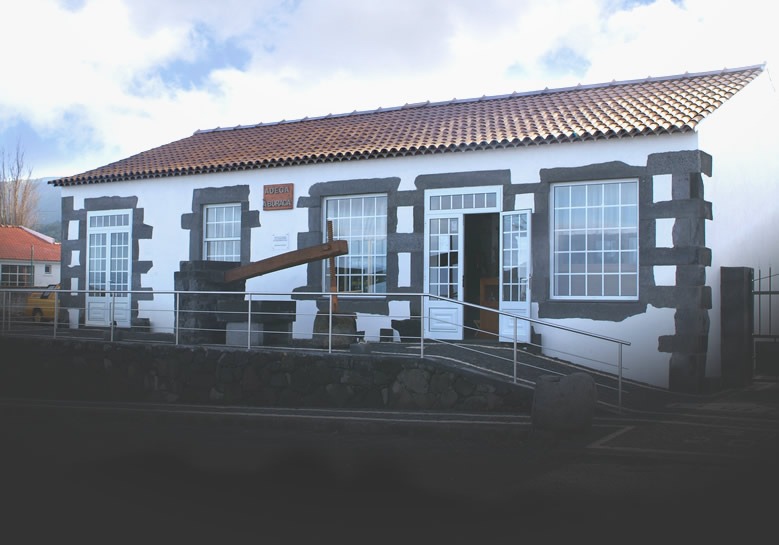
Post a comment